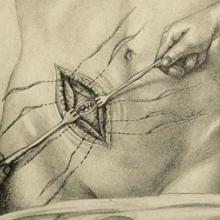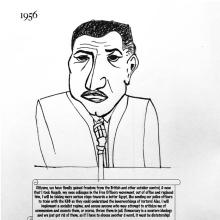I designed the course Visuality and Medicine to introduce students in the Department of Anthropology — particularly those in Medical Anthropology and Global Health (MAGH) — to insights from critical visual studies and science and technology studies regarding visuality. What is visuality? It is a strange term, so we address it together on the first day of class. I think of visuality as quite simply anything that has to do with the visual: images, seeing, being seen. It is important to medicine because of the ways that power and knowledge are related to different modes of visuality. For example, the expert seeing of scientists and healers, the mediated seeing with microscopes and ultrasound machines, photographs for global health marketing. Imagining inside the body has been a project of scientists and philosophers for centuries. We start the course thinking about vision, power, and knowledge, learning concepts explored in feminist science studies like “partial knowledge” and “feminist objectivity”.
I tell students that they will learn about how vision and visualizing are social, cultural, and historical as much as they are physical and natural. We examine medical imaging technologies, such as CT, X-ray, and ultrasound, as well as photographs and a graphic novel. We inquire about the kinds of knowledge involved in medical vision, the exclusions it performs, the people and diseases it helps to construct. We read the work of anthropologists, historians, and science studies scholars who work in France, the U.S., Papua New Guinea, Egypt, Viet Nam, Chile, and the Netherlands, among other contexts.
Visuality and Medicine asks students to reflect critically on images that saturate our daily lives, in the ‘Bring Your Image’ assignment for discussion posts:
- To develop the ability to analyze different dimensions of medical images, including personhood, objectivity, uncertainty, and postcolonial conditions of medical contexts;
- To learn how anthropologists study and write about their objects, and stimulate questioning about how you might do it (differently, or not).
The Bring Your Image assignment requires students to submit an image and a 200–400-word discussion of the image in relation to the week’s readings. Students have submitted charts, personal photographs, political cartoons, movie stills, memes, and their own drawings (one of my favorites was Mariem Shalaby’s Nasser cartoon; we were reading the graphic novel Lissa about kidney transplantation in Egypt). From students: “I really loved these assignments, it allowed me to be creative and made the readings more enjoyable,” and “Helped me to broaden the application of the concepts we were learning and connect them to prior knowledge.”



